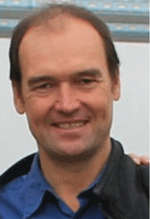Regional paleodepositional environment of the Cretaceous in the Great Australian Bight – a support for frontier exploration
Detlef Klauser-Baumgärtner A B , Thomas Reichel A and John-Are Hansen AA Equinor ASA PO Box 3, 1330 Fornebu, Norway.
B Corresponding author. Email: detk@equinor.com
The APPEA Journal 59(2) 891-895 https://doi.org/10.1071/AJ18055
Accepted: 25 February 2019 Published: 17 June 2019
Abstract
To reveal the development of the depositional environment in the Great Australian Bight, regional and high-resolution 3D-seismic interpretation and palynological evidence from well data was integrated with tectonic plate- and paleo topographical-reconstructions. Results from that work explain the drainage patterns and changes in the sedimentary evolution. A maximum transgression at the Cenomanian–Turonian boundary causes the deposition of the expected main source rock interval at the base of the Tiger mega-sequence. This is supported by Integrated Ocean Drilling Program wells (2017), asphalite strandings and dredge samples from the basin. A relative sea-level drop in the mid-Turonian initiates a forced regression and sand deposition in more distal parts of the basin. As a third mega-sequence the Hammerhead Formation progrades into the basin, depositing several thousand metres of deltaic sandstones and lagoonal shales. Our source to sink model based on our gross depositional environment maps could explain the presence of source rocks and reservoir intervals within this frontier exploration basin.
Keywords: Bight Basin, Ceduna Basin, paleodeposition, paleotopography, source rock prediction, source to sink.

Detlef Klauser-Baumgärtner finished his PhD in Geology in 1992 at the RWTH Aachen. Since then he has worked in the oil industry for Schlumberger and Wintershall, based in Germany, the UAE, Libya and Norway. In 2007 he began as a Leading Geophysicist with Statoil-Hydro in Oslo, Norway, and works currently with Equinor ASA in international exploration offshore. He has been an AAPG member since 1994. |

Thomas Reichel graduated as Master of Geology from the Friedrich Alexander University in Erlangen in 2001. In 2004 he completed his PhD at the Free University in Berlin focusing on the ‘Paleoceanographic reconstruction of the Sea of Marmara (Turkey)’ before continuing in 2005 as a Post-doc at the BGR Hannover. In 2005 he joined EMGS in Trondheim acquiring electromagnetics geophysical surveys worldwide, and was then hired by Norsk Hydro in 2006, where he worked in geophysical operations for 4 years before starting work after the merger with Statoil as an exploration geologist. For the past 8 years he has been involved in exploration projects all over the world covering unconventional and conventional access opportunities in Latin America, Africa and Australasia. |

John-Are Hansen has a background in sedimentology and structural geology. He finished his PhD in 2009 at the University of Tromsø, Norway. Following two years of post-doctoral studies in structural geology he joined Statoil ASA in 2013. He currently holds a position as Principal Researcher in exploration research, where he is working with plate tectonics and the tectono-stratigraphic evolution of continental margins. |
References
Barton, H. J. (1975). Palynological Report – Potoroo-1, Well Completion Report Potoroo-1. (http://www.ga.gov.au/nopims)Harris, W. K., Lindsey, J. M., and Mc Gowran, B. (1969). Outback Oil Pickerell Mallabie No.1, Well Paleontological Report, Department of Mines South Australia, Well Completion report Mallabie-1. (http://www.ga.gov.au/nopims)
Morgan, R. (1986). Palynology of BP Duntroon-1, Duntroon Basin, South Australia, for BP Australia, Well Completion Report Duntroon-1. (http://www.ga.gov.au/nopims)
Morgan, R. (2003). Palynology of Gnarlyknots-1A, Bight Basin South Australia, for Woodside Energy LTD, Well Completion Report Gnarlyknots-1. (http://www.ga.gov.au/nopims)
Morgan, R., and Hooker, N. (1993a). Final Palynology of BHPP Borda-1 Duntroon Basin, South Australia, for BHP Petroleum, Well Completion Report Borda-1. (http://www.ga.gov.au/nopims)
Morgan, R., and Hooker, N. (1993b). Final Palynology of BHPP Vivonne-1, Duntroon Basin, South Australia, Well Completion Report Vivonne-1. (http://www.ga.gov.au/nopims)
Morgan, R. P., and Hooker, N. P. (1993c). Final palynology of BHP Petroleum Greenly-1, Duntroon Basin, South Australia. Morgan Paleo Associates report for BHP Petroleum. In ‘Duntroon Basin EPP26, Greenly-1 well completion report, interpretive volume.’ (Ed. D. Wong). Department of Primary Industries and Resources: South Australia.
Partridge, A. (1976). Palynological Analysis of cuttings from Apollo-1 Eucla Basin, Esso Australia, Well Completion Report. Apollo-1 (http://www.ga.gov.au/nopims)
Powis, G., and Partridge, A. (1980). Exploration Department Palynology Laboratory Provisional Report, Jerboa 1, Esso Exploration and Production Australia INC., Well Completion Report Jerboa-1. (http://www.ga.gov.au/nopims)
Sayers, J., Symonds, P., Direen, N. G., and Bernardel, G. (2001). Nature of the continent–ocean transition on the non-volcanic rifted margin of the central Great Australian Bight. In ‘Non-volcanic Rifting of Continental Margins: A Comparison of Evidence from Land and Sea’. (Eds R.C.L. Wilson, R.B. Whitmarsh, B. Taylor, and N. Froitzheim) pp. 51–77. (Geological Society, London)
Totterdell, J. M., and Krassay, A. A. (2003/2). Sequence stratigraphic correlation of onshore and offshore Bight Basin successions, Geoscience Australia, Southern Australia Regional Project (http://www.ga.gov.au/nopims)
Vlierboom, F. (1972a). Palynological Report Echidna-1, Shell Development (Australia) Pty. Ltd., Well Completion Report Echidna-1. (http://www.ga.gov.au/nopims)
Vlierboom, F. (1972b). Appendix 4 Palynological Report Platypus-1, Well Completion Report Platypus-1 (http://www.ga.gov.au/nopims)


